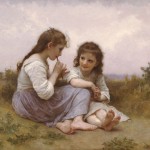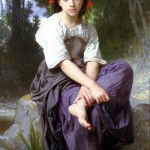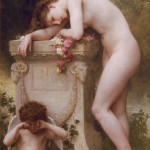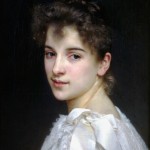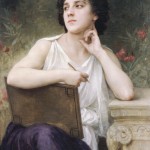William Bougeureau painted his lush fantasy world with an idealized array of mythological figures, angels, women and children.
A consummate craftsman and master of human anatomy, he utilized a delicate palette and glorious light to sensitively capture nuances of personality and mood, vibrantly bringing the soul and spirit of his subjects to life. Most of his 800 works were life-size, and their unique style and subject matter gained him a passionate following of students and imitators.
He was also a member of the French Academy, which he singlehandedly opened to women.
William-Adolphe Bouguereau (French: [buɡ(ə)ˈʁo], November 30, 1825 – August 19, 1905) was a French academic painter and traditionalist. In his realistic genre paintings he used mythological themes, making modern interpretations of classical subjects, with an emphasis on the female human body.[1] During his life he enjoyed significant popularity in France and the United States, was given numerous official honors, and received top prices for his work.[2] As the quintessential salon painter of his generation, he was reviled by the Impressionist avant-garde.[2] By the early twentieth century, Bouguereau and his art fell out of favor with the public, due in part to changing tastes.[2] In the 1980s, a revival of interest in figure painting led to a rediscovery of Bouguereau and his work.[2] Throughout the course of his life, Bouguereau executed 822 known finished paintings, although the whereabouts of many are still unknown.[3]


